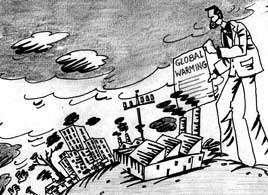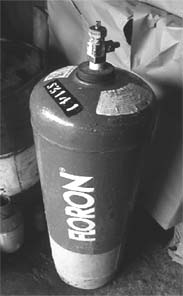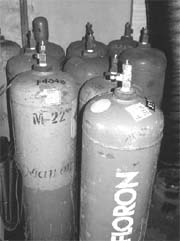Healing the ozone layer through diplomacy
The Montreal Protocol shows what is possible when science, diplomacy, and business cooperate to implement international environmental agreements. When the people became aware of a hole in the ozone layer
The Montreal Protocol shows what is possible when science, diplomacy, and business cooperate to implement international environmental agreements. When the people became aware of a hole in the ozone layer
Alternatives to banned ozone depleting substances may jeopardise the effectiveness of the Montreal Protocol
The UN Environment Programme (UNEP) recently launched the first ever online halon trading scheme. Halons are gaseous halogen compounds used to extinguish fires and they are three to 10 times more

First observed evidence of long term effects of GHG emissions

The first Indian refrigerator to meet Montreal Protocol standards is unveiled

Global warming is likely to be far greater and faster than previous estimates, says the latest report of the Hadley Centre for Climate Prediction and Research. Merely planting more trees won t help

NASA discovers the largest ever ozone hole over Antarctica. A wake up call for industrialised countries to reduce greenhouse gas emissions

The Montreal Protocol was meant to eliminate Ozone depleting substances. It is turning out to be a technology trap for Indian industry. And the government is clueless
Aerosols from Asia are poisoning the environs of the Pacific Ocean, say researchers
india is getting a grant of us $82 million, for gradually phasing out the production of ozone depleting substances (ods) such as CFCs (chlorofluorocarbons). This is the

international efforts to restore the ozone layer are being threatened by a flourishing black market of chlorofluorocarbons (cfcs), said Paul Frasier, senior principal research scientist with the